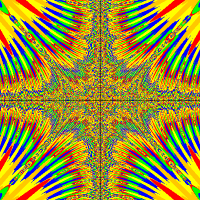Hello all. I have been working on exercises 9.69 and 9.70 for homework.
A brief explanation of exercise 9.70 and what I'm trying to do: We modify the Asteroids source code to make it to where whenever all of the asteroids have been destroyed, more than were present in the first "level" will appear for the second "level." So I currently have it where one asteroid will start in the beginning, and my goal is to have 2 asteroids spawn after you've destroyed the entire first asteroid. Then, after you've destroyed the second two asteroids, three more will spawn, so on and so forth.
My issue: I am having trouble triggering asteroidsRemaining() without errors. For some reason it keeps resulting in a NullPointerException and I can't figure out why. I have an ArrayList named "asteroidsRemaining" which is supposed to be populated every time an asteroid is created, and every time that asteroid is blown up, it is removed. Once asteroidsRemaining is empty (meaning all asteroids have been blown up), then it should trigger the next "level."
Homework constraints: My professor has required that we use List<> or ArrayList<> (I have used the ladder) and that we can only modify Space.java and Asteroid.java.
So, here's my code:
Any help is appreciated ;)
// Space class
import greenfoot.*;
/**
* Space. Something for rockets to fly in.
*
* @author Michael Kölling
* @version 1.2
*/
public class Space extends World
{
private Counter scoreCounter;
private int startAsteroids = 1;
/**
* Create the space and all objects within it.
*/
public Space()
{
super(600, 500, 1);
GreenfootImage background = getBackground();
background.setColor(Color.BLACK);
background.fill();
createStars(300);
Rocket rocket = new Rocket();
addObject(rocket, getWidth()/2 + 100, getHeight()/2);
addAsteroids(startAsteroids);
scoreCounter = new Counter("Score: ");
addObject(scoreCounter, 60, 480);
Explosion.initializeImages();
ProtonWave.initializeImages();
}
/**
* Add a given number of asteroids to our world. Asteroids are only added into
* the left half of the world.
*/
private void addAsteroids(int count)
{
for(int i = 0; i < count; i++)
{
int x = Greenfoot.getRandomNumber(getWidth()/2);
int y = Greenfoot.getRandomNumber(getHeight()/2);
addObject(new Asteroid(), x, y);
}
}
/**
* Crete a given number of stars in space.
*/
private void createStars(int number)
{
GreenfootImage background = getBackground();
for(int i=0; i < number; i++)
{
int x = Greenfoot.getRandomNumber( getWidth() );
int y = Greenfoot.getRandomNumber( getHeight() );
int color = 120 - Greenfoot.getRandomNumber(100);
background.setColor(new Color(color,color,color));
background.fillOval(x, y, 2, 2);
}
}
/**
* This method is called when the game is over to display the final score.
*/
public void gameOver()
{
addObject(new ScoreBoard(scoreCounter.getValue()), getWidth()/2, getHeight()/2);
}
public void countScore(int score)
{
scoreCounter.add(score);
}
public void increaseAsteroids()
{
startAsteroids++; // Increase amount of asteroids by 1
addAsteroids(startAsteroids); // Add more asteroids
}
}// Asteroid class
import greenfoot.*;
import java.util.ArrayList;
/**
* A rock in space.
*
* @author Poul Henriksen
* @author Michael Kölling
*/
public class Asteroid extends SmoothMover
{
ArrayList asteroidsRemaining = new ArrayList(); // Create asteroidsRemaining ArrayList
/** Size of this asteroid */
private int size;
/** When the stability reaches 0 the asteroid will explode */
private int stability;
/**
* Create an asteroid with default size and random direction of movement.
*/
public Asteroid()
{
this(50);
asteroidsRemaining.add(this);
}
/**
* Create an asteroid with a given size and random direction of movement.
*/
public Asteroid(int size)
{
super(new Vector(Greenfoot.getRandomNumber(360), 2));
setSize(size);
}
/**
* Create an asteroid with a given size and direction of movement.
*/
public Asteroid(int size, Vector velocity)
{
super(velocity);
setSize(size);
}
public void act()
{
move();
}
/**
* Set the size of this asteroid. Note that stability is directly
* related to size. Smaller asteroids are less stable.
*/
public void setSize(int size)
{
stability = size;
this.size = size;
GreenfootImage image = getImage();
image.scale(size, size);
}
/**
* Return the current stability of this asteroid. (If it goes down to
* zero, it breaks up.)
*/
public int getStability()
{
return stability;
}
/**
* Hit this asteroid dealing the given amount of damage.
*/
public void hit(int damage)
{
stability = stability - damage;
if (stability <= 0)
{
breakUp();
}
}
/**
* Break up this asteroid. If we are still big enough, this will create two
* smaller asteroids. If we are small already, just disappear.
*/
private void breakUp()
{
Greenfoot.playSound("Explosion.wav");
Space space = (Space)getWorld();
if (size <= 16) {
space.countScore(3);
asteroidsRemaining.remove(this); // This should remove this Asteroid from the asteroidsRemaining ArrayList
getWorld().removeObject(this);
asteroidsRemaining(); // Calls asteroidsRemaining()
}
else
{
if (size <= 25)
{
space.countScore(2);
}
else
{
space.countScore(1);
}
int r = getVelocity().getDirection() + Greenfoot.getRandomNumber(45);
double l = getVelocity().getLength();
Vector speed1 = new Vector(r + 60, l * 1.2);
Vector speed2 = new Vector(r - 60, l * 1.2);
Asteroid a1 = new Asteroid(size/2, speed1);
Asteroid a2 = new Asteroid(size/2, speed2);
getWorld().addObject(a1, getX(), getY());
getWorld().addObject(a2, getX(), getY());
a1.move();
a2.move();
getWorld().removeObject(this);
}
}
private void asteroidsRemaining()
{
Space space = (Space)getWorld();
if (asteroidsRemaining.isEmpty()) // If asteroidsRemaining ArrayList is empty, which should only be if the last asteroid has been blown up
{
space.increaseAsteroids(); // Call increaseAsteroids() from Space.java
}
}
}


